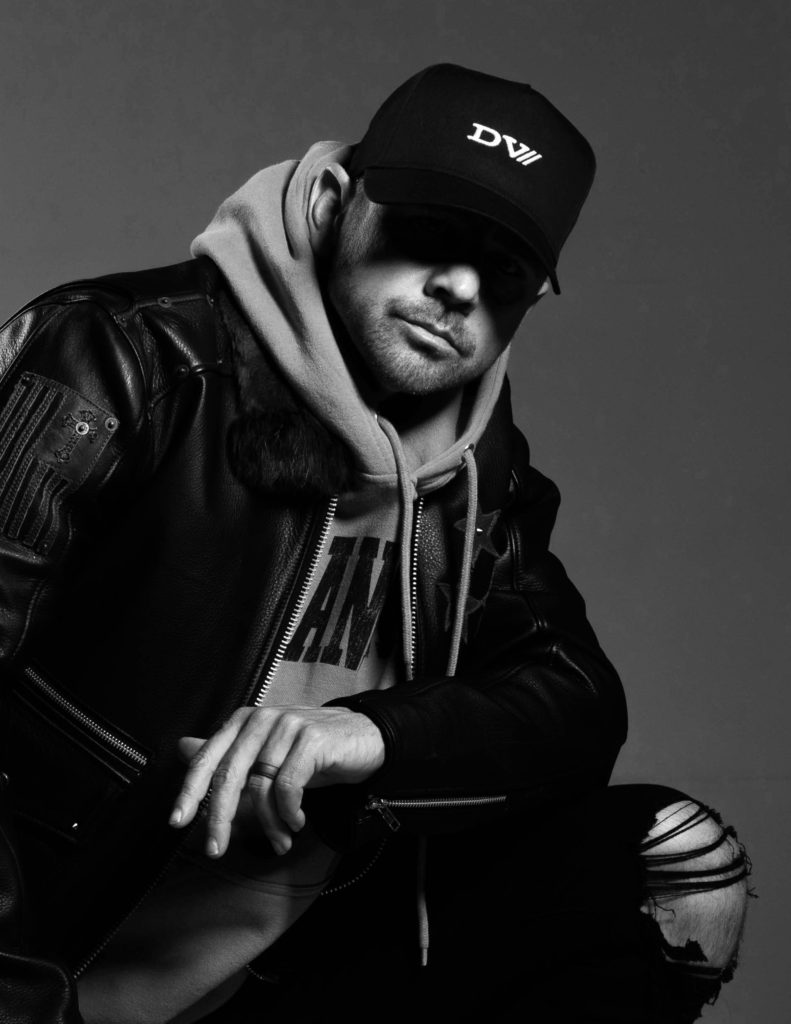Follow our tried and true workflow for making an epic music video.
Editing music videos
If you are a musician, an epic music video of your song can be a great way to bring your art to life. In a world dominated by video content, they can help you build your audience and grow your following.
However compared to other video types, music videos present a problem in that they are usually very difficult to edit. In today’s world the bar has been set high for music videos, with a 3-4 minute song usually requiring hundreds of cuts , effects and dynamic elements…..
Music Videos can take a lot of time to execute.
At Dreamvision media we have edited a lot of music videos and over the years have developed what we feel is a good workflow for editing an epic music video. By following our simple workflow in your editing process, you will end up with the best results. This article will be organized into 3 sections: Preparing the edit, Choosing your editing techniques, & Polishing your edit for delivery.
PREPARING FOR THE EDIT
Step 1: Understanding the song and the artist
Before you make one cut it’s critical that you understand the song, the artist, and what they are trying to communicate with the video. We always do our due diligence in researching the artist we are working with to make sure the video is “on brand”. Music has so many genres and different aesthetics, it’s easy to get lost. Once you have a good grasp on the artist and their personal style it will help you find the creative direction.
Step 2: Determine Creative Direction for your edit.
There are alot of popular directions to take your edit. Most of the time your footage will dictate that direction. For example if you want to make a narrative style edit but don’t have any footage of a narrative sequence, you won’t really be able to go that direction.
Below we have a list of popular editing styles you can consider for your project. We recommend figuring this out before you begin to cut the footage.
Common Editing styles of music videos
- Performance-Centric Music Video: For this editing style, the aim is to keep the artist or band performance as the focal point. Usually for these videos , the editor will cut between different angles or scenes keeping the energy of the song and maintaining viewer interest by fast cuts to the beat.
- Narrative- Centric Music Video: This approach involves integrating a storyline somehow into the video. This can be done with a cinematic intro or outro, even a break in the middle of the song. The editor must alternate between the storyline and the performance, creating a mini-movie effect. This can also be enhanced with integrating movie-like titles that follow the cinema driven theme.
- Lyrical Focused Music video: In this style of editing, the visual elements will directly correspond to the lyrics of the song. This might involve literal interpretations or more abstract visual representations. You can even add text into the video that goes along with the edit. The cuts and transitions are often synchronized to the lyrics, creating a strong link between the audio and visuals.
- Montage Style music video: Another interesting way to edit a music video is the Montage edit. This style involves a series of short, fast cuts that are strung together to form a larger narrative or theme. A Video Montage is a tried and true used to show progression or the passage of time. However in order to edit it logically and correctly , there should be some linear direction otherwise it could make your audience lose interest.
- Thematic Music Video: This approach organizes footage around a central theme or concept, which can be anything abstract and symbolic. The editor uses visual motifs and repeated imagery to enhance the central theme. You can pick a direction that matches the song and run with it.
- Effects-Based Music Video: A new trend in music videos is the effects based edit. This style heavily incorporates post-production effects such as speed ramping, color grading, visual distortions, or other digital effects. It’s often used to create a specific mood or aesthetic. It can be a great way to make your audience enter another world.
- Experimental Editing: Like all great art forms, there sometimes are videos that follow no rules and come out amazing. The beauty of art is that you can do anything, however this can also be a disaster if the edit doesnt match the vibe of the artist it represents.
FINDING INSPIRATION AND REFERENCES
A great way to find creative direction for a music video edit is with the help of references. Youtube has thousands of amazing video examples to watch and get inspired by. Every film is built on top of references; it can help you determine what to to in your edit as well as what not to do.
ORGANIZE YOUR CLIPS
Once you have determined the creative direction of your music video we recommend organizing your footage. Start by watching over all the clips you have for the video and separate them into folders. This will save you a ton of time when you’re editing. We also recommend creating a trash folder for clips that will not make the cut. After looking through your clips this will also help you understand your limitations of what you do with them. As explained earlier, how can you make a narrative style edit if there are no clips that can give you that result. Knowing what “ingredients” you have to work with will help you hone your creative direction.
STARTING YOUR EDIT
No matter what creative direction you choose, the first step in editing is always the same. You should lay your audio track of the song along the timeline, and layer all performance videos that you want to use over the track, syncing the audio to the video. From here you can begin to add cuts and transitions between camera angles and other scenes. Below is a list of winning creative editing techniques to spice up your music video.
ADDING FLAVOR TO YOUR EDIT : EDITING TECHNIQUES
- Beat Matching: Synchronizing cuts and transitions to the beats of the music to create a rhythmic visual experience.
- Cross-Cutting: Showing two or more different scenes happening simultaneously to create contrast or build suspense.
- Match Cut: Connecting two visually similar shots or scenes to create a sense of continuity.
- Juxtaposition: Placing contrasting visuals or scenes side-by-side to emphasize differences or create meaning.
- Speed Ramping: Changing the speed of clips to highlight certain moments or create dramatic effects.
- Text and Graphics: Adding lyrics, animations, or other graphic elements to emphasize points or add artistic flair.
- Jump Cut: Cutting between similar shots where the subject has moved, creating a “jump” effect for emphasis or pace.
- Montage: Using a series of short, fast cuts to form a larger narrative or theme.
- Cutaway Shots: Inserting shots of secondary action or visuals to break away from the main scene, providing additional context or detail.
- Transitions: Using creative transitions, like wipes, fades, or dissolves, to smoothly switch between scenes.
- Reverse Footage: Playing clips in reverse for unique or surreal effects.
- Rhythm Editing: Using the rhythm of the music to dictate the pace and timing of cuts and transitions.
- Sound Effects: Adding sound effects to enhance visuals or emphasize transitions.
- Split Screen: Displaying two or more scenes at the same time, usually to show simultaneous actions or comparisons.
- Overlays: Adding texture, patterns, or visual effects over footage to create depth, mood, or a unique visual style.
- Zoom and Pan: Utilizing zoom and pan effects to shift focus or create movement.
- Masking: Using a mask to blend or transition between two clips, or to hide or reveal certain parts of a shot.
- Parallel Editing: Cutting back and forth between two or more scenes that are happening simultaneously but in different locations.
- Freeze Frame: Pausing on a certain frame for emphasis or dramatic effect.
- VFX: Adding VFX in programs like Unreal Engine, AI, or after effects can be a cool way to spice up the edit.
POLISHING YOUR EDIT
No edit is its best version on the first take, it always needs to be polished below are list of ways to make sure your edit comes out the best way possible
1)Step away from your edit – Sometimes the best thing you can do from a creative project is step away from it for a few days in order to see it again with fresh eyes. Many times when your deep in an edit you will become blind to many flaws and are spend so much time looking at it you become numb to it. Unless you have a hard deadline its always best to let it breathe and come back when you can feel it again. As a skilled editor of over 20 years, it always works for me.
2)Reddit your edit – Once you have your first version done and have stepped away for a few days, rework some of the sequences and play around with the layout of the clips. Try to think about the audience viewing the edit for the first time and make your editing tighter. LIne up everything perfectly on beat and perfect each element.
3) Make your thumbnail or poster – Find a frame from your video that could serve as the hero image. Once you make your thumbnail or poster, this can give you a vibe that will help you in color grading. The hero image and poster are the first thing people will see when they watch the music video, it should all feel cohesive.
4) Color Grade your project – With the cutting done of your editing and a poster to represent the project , you now are building an identity for this song.
A vibe.
This will give you the seed to build off of with your color grade. It should all flow together and complete the project’s overall feel.
5)Extra Credit Editing: Creating a teaser and screen grabs for social media.
All music videos need to have some promotional material, creating a teaser and screengrabs for marketing purposes are the last pieces you’ll need to edit your epic music video. Professional videos always have a teaser and materials to get people to watch.
Final thoughts
Remember, the editing style should always serve the music, the artist, and the intended message of the video. At Dreamvision media we have edit a lot of videos and found these tips to be most effective. These tips can save you tons of time and mental anguish as music videos can be some of the most elaborate and difficult styles of videos to create.
If you need help with a music video project contact us below.


